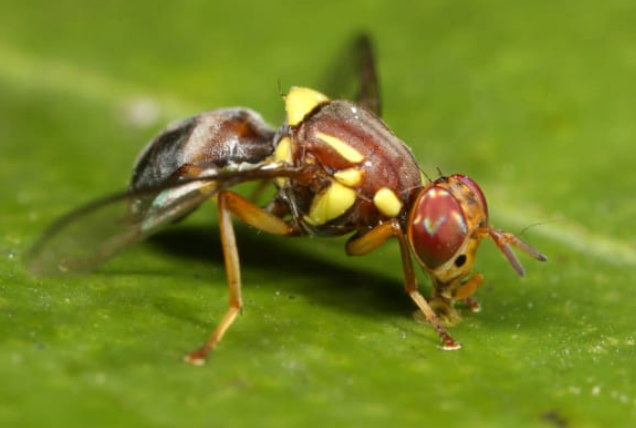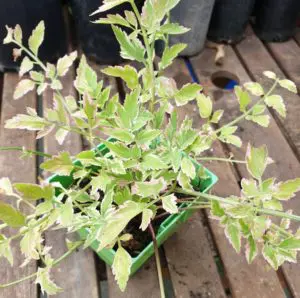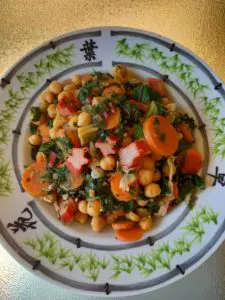The Queensland fruit fly is a serious garden pest that destroys a wide variety of crops by laying its eggs inside fruit and vegetables. This results in fruit which is full of maggots and rotting, sloppy flesh…in other words, completely ruined.
While they are a nuisance for the backyard gardener, the damage they cause means heavy crop losses for farmers, so there are lots of good reasons to control this nasty pest. Most active in spring and summer, this tropical QLD native has now spread throughout the eastern seaboard, and across to Western Australia.
With the distribution of this destructive insect now nearly nationwide, it’s time for us all to become familiar with the QLD fruit fly and learn how to manage it.

What is the QLD fruit fly? The Queensland fruit fly is a small (ca.7mm long) insect with distinctive yellow markings on its back and clear wings. it is not always quick and easy to identify, as it doesn’t sit still for long. In addition, it can easily be mistaken for a gnat or the mediterranean fruit fly.
The QLD fruit fly has a life cycle that can span from as little as 4 weeks to as long as nearly a year. They can survive the dry season and/or colder weather by taking shelter in covered areas such as under leaves. It prefers warm, humid conditions, and is most active immediately after rain. If the weather is particularly warm and host fruit is available, they can remain active through autumn and winter. Most soft-skinned fruits are targeted, but thicker-skinned ones aren’t left alone either; citrus is favoured by the fruit fly as the colour yellow is a visual attractant. Tomatoes, capsicum, pumpkins, melons and grapes are prime targets as they love anything with a sap.
The QLD fruit fly life cycle is comprised of four stages: egg, maggot, pupa and adult fly. The female fruit fly pierces (‘stings’) fruits in order to lay her eggs. Early in the growing season, eggs can be laid into very immature fruit, most often near the stem. As the season progresses, fruits will be stung all over.
The maggot takes from a week up to several months to mature, depending on the weather. It eats its way through the flesh of the fruit as it ripens, leaving infected rotten mush in its wake. Fruit fly maggots are 7-8 mm long and cream to white in colour. The maggots cause the fruit to ripen enough to fall and rot, then form a hard brown shell to mature into pupa, either in the rotting fruit or in the ground under the fruit. The pupa stage may only last a few days. They then emerge as mature flies, ready to mate and lay more eggs.

There are two main ways to manage the Queensland fruit fly: baiting and netting. Many home gardeners do both, particularly in Queensland.
Traps can be home-made or bought at major hardware stores or nurseries. The Agriculture Victoria website shows how easy it is to make your own fruit fly traps using a soft drink bottle, fruit juice and cloudy ammonia. Alternatively, watch our video demonstration. Fruit fly traps work by attracting the flies as a food source, then they eat the enclosed insecticide and die.
The average suburban backyard should have at least 4 traps, all hung at shoulder height. The mixture inside the traps lasts about 3 weeks, but best results will come from changing the liquid weekly. Commercial traps will have a yellow lid, since fruit fly are particularly attracted to the colour yellow. There used to be separate male and female traps, each requiring specific baits. Currently, there is a bait available in shops that attracts both male and female fruit fly. Baits come in both stick and liquid forms. I have used both over the years, with good results. While chemical baits aren’t too expensive, I mostly make my own which seems to work just as well.
I hang my traps in the shade and keep them going all year round. Many baits will attract fruit fly from as far as 400 metres (437 yards) away, so hanging traps might be doing your neighbours a favour too. With the increasing distribution of the Queensland fruit fly, those who live in colder climates may now need to hang traps during their hotter months.

Exclusion by netting is an effective preventative solution which is often used in conjunction with traps. You can bag fruit individually or entire plants can be covered with large nets.
Whichever type of netting you choose, make sure the holes are no more than 1.6 mm or fruit fly may enter. Fruit should be covered as soon as it appears. Bags or nets should not touch any fruit, as fruit fly can sting through it. Larger trees may benefit from having a net draped over a frame. Trees should have netting tied around the base of the trunk if covered without a frame. Raised garden beds can be netted as shown below.

Good garden hygiene is also important. Pick up any dropped fruit and dispose of it, so you don’t create any breeding sites. Check your traps every few days and change the attractant as necessary.
Bag and throw out all infected fruit as soon as possible. To stop the fruit fly life cycle, freeze infected fruit for 2 days prior to disposal. Never place infected produce into your compost bin or worm farm.












